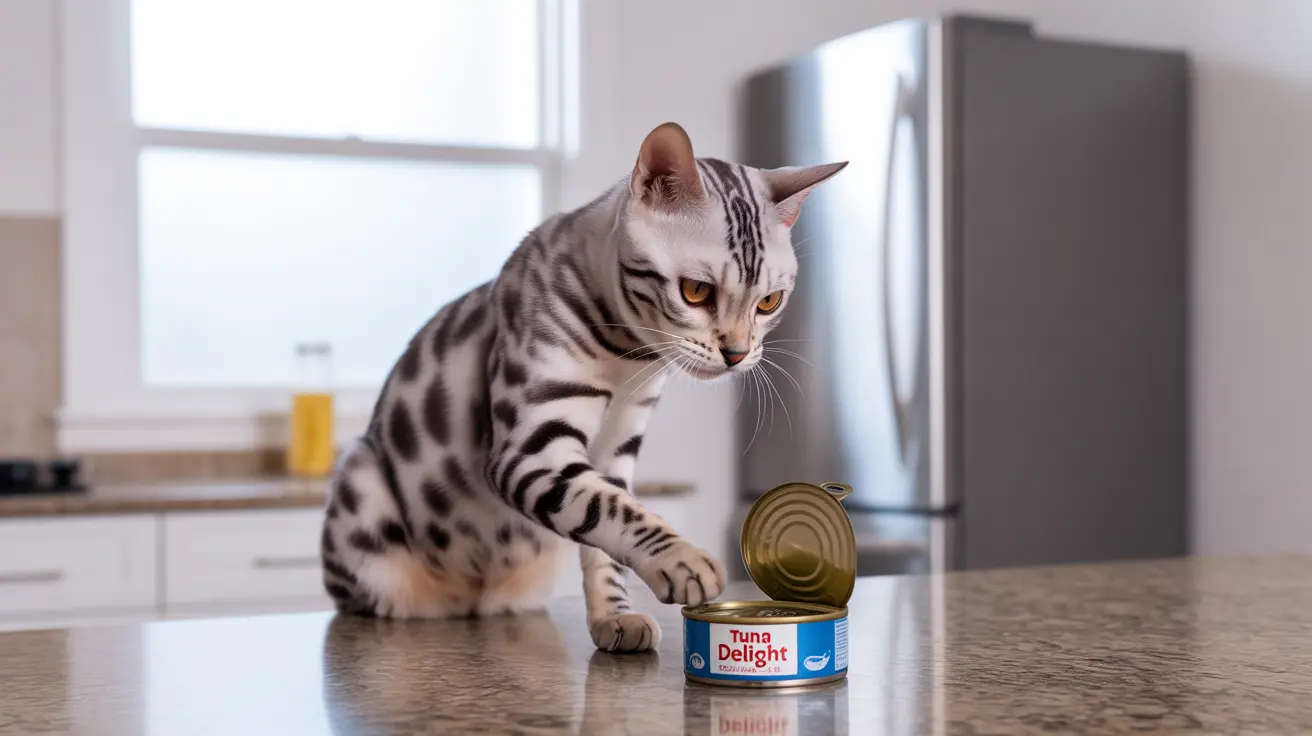Introduction
Many cat owners have wondered about feeding tinned tuna to their feline friends, especially given how enthusiastically cats respond to its smell and taste. While cats may love this seafood treat, the question of whether they should eat it requires careful consideration. This comprehensive guide explores the safety, risks, and best practices for feeding tinned tuna to cats.
Understanding the proper approach to tinned tuna is crucial for your cat's health and well-being. While not inherently toxic, this human food comes with several important considerations that every cat owner should know about.
The Truth About Tinned Tuna and Cats
Nutritional Benefits and Limitations
Tinned tuna does contain protein and omega-3 fatty acids, which can benefit cats. However, it lacks many essential nutrients that cats need for optimal health, including:
- Taurine (an essential amino acid)
- Vitamin E
- Calcium
- Essential B vitamins
- Proper mineral balance
Potential Health Risks
Regular consumption of tinned tuna can lead to several health concerns:
- Mercury exposure
- Vitamin E deficiency (steatitis)
- Thiamine deficiency
- Digestive issues
- Potential allergic reactions
Safe Feeding Guidelines
Choosing the Right Type
When offering tinned tuna to cats, always select:
- Chunk light tuna (lower mercury content)
- Tuna packed in water (not oil or brine)
- Plain, unseasoned varieties
- Mercury-tested brands when possible
Proper Portion Size
Moderation is key when feeding tinned tuna to cats:
- Maximum 1 tablespoon per week for adult cats
- Only as an occasional treat
- Never as a meal replacement
- Adjust portions based on your cat's size and health status
When to Avoid Tinned Tuna
Some cats should not eat tinned tuna at all, including:
- Kittens under one year old
- Cats with kidney disease
- Cats with known fish allergies
- Pregnant or nursing cats
- Cats with thyroid issues
Frequently Asked Questions
Is it safe to feed my cat tinned tuna regularly?
No, tinned tuna should not be a regular part of your cat's diet. It lacks essential nutrients and can lead to health problems if fed frequently. Stick to it as an occasional treat only.
What type of canned tuna is best for cats to eat?
Chunk light tuna packed in water is the safest option. Avoid tuna packed in oil or brine, and always choose unseasoned varieties without added salt or flavoring.
Can feeding tuna to my cat cause allergies or digestive problems?
Yes, some cats can develop allergies or intolerances to fish, including tuna. Watch for symptoms like vomiting, diarrhea, or skin irritation. If these occur, discontinue tuna and consult your veterinarian.
How much tinned tuna can I give my cat without risking health issues?
Limit tinned tuna to no more than 1 tablespoon per week for adult cats. This amount helps minimize risks while still allowing your cat to enjoy it as a treat.
Why should kittens avoid eating tuna compared to adult cats?
Kittens are more sensitive to nutritional imbalances and mercury exposure than adult cats. Their developing bodies need complete, balanced nutrition, which tinned tuna cannot provide.
Conclusion
While cats may love tinned tuna, it should remain an occasional treat rather than a dietary staple. Always prioritize a complete and balanced cat food diet, and consult with your veterinarian before making any significant changes to your cat's feeding routine. By following these guidelines, you can safely incorporate small amounts of tinned tuna into your cat's treat rotation while avoiding potential health risks.






